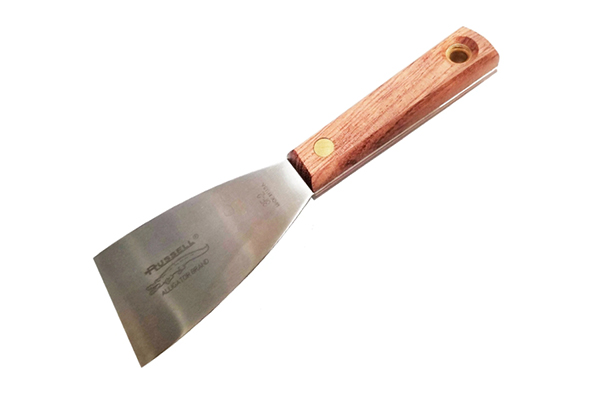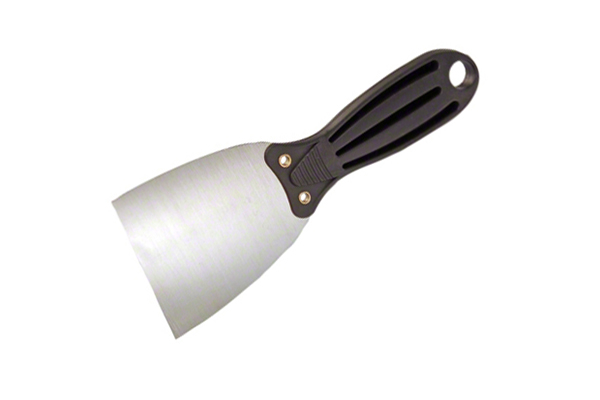Putty knives are essential tools for various tasks, from filling holes in drywall to spreading compound and smoothing surfaces. Whether you are a DIY enthusiast or a professional, understanding the different types of putty knives can help you achieve better results with less effort. Among the most common types are flexible and rigid putty knives. Though they may look similar at first glance, these tools have distinct characteristics that make them better suited to different applications. In this article, we’ll explore the key differences between flexible and rigid putty knives, as well as their respective uses.
What Is a Putty Knife?
A putty knife is a flat, wide tool designed to spread or smooth materials like putty, spackle, or plaster onto surfaces. They typically feature a handle made of wood, plastic, or metal, and the blade is made of steel or stainless steel. Putty knives come in various sizes, ranging from 1 inch to 6 inches wide or more, allowing for different levels of precision and coverage.
1. Flexible Putty Knives
As the name suggests, flexible putty knives have a blade that can bend or flex under pressure. The flexibility of the blade makes these knives particularly useful for tasks where a bit of give is necessary, or when working on surfaces that require delicate touch.

Characteristics:
- Blade Material: Flexible putty knives are typically made of thinner steel, which allows them to bend and conform to surfaces.
- Flexibility: The blade has a noticeable amount of bend, making it more adaptable to different surfaces, especially curved or irregular ones.
- Width: These knives tend to be narrower, usually ranging from 1 inch to 4 inches wide, although they can be found in larger sizes as well.
- Comfort and Precision: Flexible knives are lightweight and easier to control, offering more precision when applying a smooth layer of material or filling smaller holes.
Uses:
Flexible putty knives are most commonly used in situations where you need to smooth out surfaces, spread compounds evenly, or fill fine cracks and holes. Their flexibility allows them to conform to surface contours, making them ideal for drywall work, smoothing plaster, or applying finishes like spackle or caulk. They are particularly useful in tasks that require delicate spreading or smoothing of a thin layer of material without causing too much disruption to the surface below.
Flexible knives are also popular for tasks where you need to apply or smooth materials in tight or hard-to-reach areas. Their flexibility allows them to get into corners or around edges more effectively than their rigid counterparts.
2. Rigid Putty Knives
In contrast to flexible knives, rigid putty knives have a stiffer, more solid blade that does not bend. This rigidity makes them well-suited for applications where strength and durability are key. Rigid putty knives are better for tasks that involve heavy-duty scraping or where a firmer, more controlled spread is necessary.

Characteristics:
- Blade Material: Rigid putty knives are made from thicker steel or stainless steel, making them more robust and durable.
- Rigidity: The blade is much stiffer, providing more force for heavy-duty applications and preventing the blade from bending or flexing during use.
- Width: These knives are available in a variety of widths, from narrow (1 inch) to wide (6 inches or more), depending on the task at hand.
- Strength and Durability: Rigid knives can withstand more pressure, making them useful for scraping, removing old paint, or handling thicker materials like joint compounds.
Uses:
Rigid putty knives are ideal for tasks where you need to apply significant force or scrape off hard, stubborn materials. They are commonly used for:
- Scraping off paint, glue, or wallpaper: The rigidity of the blade allows for the effective removal of these materials from walls or other surfaces.
- Heavy-duty filling: When applying thick layers of joint compound or plaster, a rigid putty knife provides more control and helps you apply the material evenly without the blade bending.
- Smoothing thicker layers of material: For tasks where you need to spread or smooth a more substantial layer of product, a rigid knife helps maintain a consistent spread.
Rigid putty knives are also useful for larger surface areas where precision is less critical, and you need to cover a broad surface quickly and efficiently.
Key Differences Between Flexible and Rigid Putty Knives
| Feature | Flexible Putty Knife | Rigid Putty Knife |
|---|---|---|
| Blade Flexibility | Can bend or flex under pressure | Does not bend; remains stiff |
| Blade Thickness | Thinner steel blade for flexibility | Thicker, more durable blade |
| Application | Ideal for spreading and smoothing light layers | Ideal for scraping and heavy-duty spreading |
| Best for | Drywall finishing, applying thin layers of compound | Removing paint, glue, or scraping thick materials |
| Control | More control for detailed work | Provides more force for larger tasks |
Which One Should You Use?
The choice between a flexible and a rigid putty knife ultimately depends on the task you’re performing:
-
Choose a flexible putty knife if you need precision and control for tasks like spreading thin layers of spackle, smoothing out drywall, or filling fine cracks. Its flexibility will allow you to work with curves and contours more effectively.
-
Choose a rigid putty knife if you’re performing heavy-duty scraping, removing old paint, or applying thicker layers of joint compound. The stiffness of the blade will give you more strength and help you cover larger surface areas more quickly.
Conclusion
Both flexible and rigid putty knives serve important roles in various home improvement, construction, and DIY projects. Understanding the differences between the two allows you to choose the right tool for the job, ensuring you can complete tasks more efficiently and with better results. Whether you’re smoothing surfaces, scraping old paint, or applying compounds, selecting the appropriate putty knife is essential for achieving the desired finish.
Post time: 2月-22-2025






